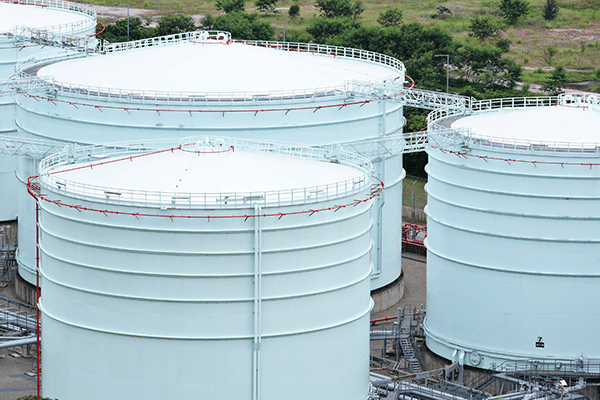
Owners and operators of fuel storage facilities are subject to regulations and codes of practice, aimed at preventing leaks of fuel into the environment and ensuring prompt and effective clean-up in the event of a leak, increasing the need for VOC detectors.
Environmental contamination can come from spills, overfill of storage tanks, and corrosion or deterioration of storage tanks – both above and below ground. Reactive action once a major leak has been discovered is costly and can lead to serious health and environmental implications. Modern PID instruments, however, offer a cost-effective option by routinely monitoring facilities, enabling leaks to be detected at the very earliest stages before a minor problem becomes a major incident.
Fuel is an inherently hazardous substance, being highly volatile and readily burning within its vapor phase. This makes leaks highly dangerous when sources of ignition are present, so owners and operators of fuel storage facilities employ safety measures to ensure leaks are detected well before the quantities of fuel needed to cause an explosion escape. Just as serious, smaller leaks may go undetected for long periods, leading to environmental problems and significant health concerns. Aromatic hydrocarbons such as benzene and toluene are known carcinogens, while other hydrocarbons and petrol additives represent health risks.
International research in 1990 estimated that of the millions of underground storage tanks containing fuels and chemicals, any estimated 25%, could be leaking to some degree. If hazardous components of petrol, such as benzene, get into groundwater, there is a major risk of contamination of water supplies. Above ground, there is a large potential for leaks in storage tanks due to degradation, damage, or corrosion.
There are also risks of benzene and other chemicals being released into the air. Benzene is a particularly hazardous chemical. The effects of high exposure include headache, dizziness, nausea, and tiredness, while long-term exposure to excessive levels is a direct cause of leukemia. It also targets the liver, kidneys, lungs, heart, and brain, and can cause DNA strand breaks and chromosomal damage. Additives to petrol such as anti-knock chemicals are also known carcinogens.
While a leak of petrol likely to cause an explosion would be readily smelled, a small leak that might not yet be noticeable could still pose a significant health risk. Legislation regarding benzene has set exposure limits no higher than 1ppm averaged over an eight-hour day, or 5ppm for 15 minutes.
Modern tanks and pipework are fitted with leak detection systems, but it is not always easy to make a financial case for replacing a perfectly serviceable existing tank. Another alternative that is extremely costly is to replace existing underground storage tanks. Regular monitoring is essential to detect any leak before it becomes a major problem.
PID instruments such as the Tiger from ION Science provide a simple and cost-effective solution and are the perfect VOC detectors that regularly monitor fuel storage facilities. Photoionization detection (PID) has been proven to be the ideal technology for detecting volatile organic compounds and other hazardous chemicals at ppb levels.
The ION Science Tiger is a robust, hand-held instrument that provides a dynamic detection range of 1ppb to 20,000ppm, offering the widest detection range of any VOC detectors on the market. It employs advanced, patented technology to provide increased resistance to humidity and contamination. Ready to use instantly, it requires no complex set-up procedures, yet provides the best available VOC detection and software features available.
ION Science is a leading gas detection and prevention company offering a variety of solutions across a vast amount of applications. To find out more about products offered from ION Science for gas and leak detection, view our products page. For more information about detection for fuel storage or if you have a question for us, contact ION Science today.











